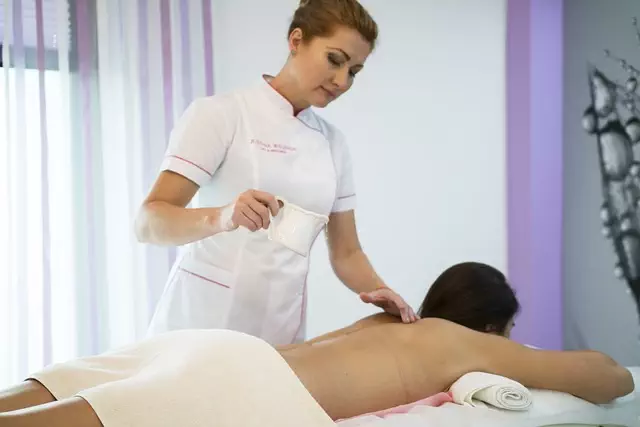Professional Botox treatments and dermal fillers are non-surgical facial rejuvenation options. Botox relaxes muscle groups to reduce fine lines, while fillers enhance volume and tighten sagging skin. Choosing between them depends on individual needs and desired results. Botox targets dynamic wrinkles, preventing expression lines, while fillers add volume to hollow areas and smooth superficial wrinkles. Both have unique benefits, side effects, and maintenance requirements. Consulting a certified specialist ensures the best option for achieving a youthful look.
Discover the world of non-surgical facial rejuvenation with leading-edge solutions—Botox and fillers. This comprehensive guide explores how these treatments transform your appearance without incisions. From understanding the fundamentals of non-invasive procedures to delving into the science behind Botox and the diverse types of fillers, we demystify these popular cosmetic choices. Learn about their unique benefits, potential risks, and how to select the best option for your aesthetic goals, focusing on the advantages of professional Botox treatments.
Understanding Non-Surgical Facial Rejuvenation

Non-surgical facial rejuvenation has gained immense popularity as a less invasive approach to achieving a youthful appearance. At its core, this method involves utilizing advanced technologies and natural substances to lift, contour, and enhance facial features without surgery. Two prominent players in this domain are Professional Botox treatments and dermal fillers.
Botox, a popular choice, works by relaxing specific muscle groups, reducing the appearance of fine lines and wrinkles. It offers a subtle yet effective result, making it ideal for individuals seeking a natural enhancement. On the other hand, dermal fillers boost facial volume by injecting hyaluronic acid or collagen into the skin, providing immediate results in the treatment of deep wrinkles and sagging skin. Understanding these non-surgical solutions is key to making an informed decision about which one suits your needs best.
What is Botox? A Comprehensive Overview

Botox, a popular and highly effective non-surgical solution in the beauty industry, is a protein produced by a specific bacteria. When injected into the skin, it blocks nerve endings, temporarily paralyzing muscles responsible for creating facial lines and wrinkles. This action results in a smoother, more youthful appearance. Professional Botox treatments focus on targeted injections to specific areas of concern, offering a subtle yet significant enhancement without any invasive procedures.
This treatment is well-known for its ability to reduce the appearance of dynamic lines, particularly around the eyes and forehead. Over time, regular treatments can help prevent the formation of new wrinkles by relaxing muscles, providing a more relaxed and rejuvenated look. Many individuals opt for professional Botox treatments due to their minimal downtime, quick recovery, and long-lasting results.
How Does Botox Work for Cosmetic Purposes?

Botox, a protein derived from a bacterium, is renowned for its ability to smooth fine lines and wrinkles, offering a popular non-surgical cosmetic solution. Its primary mechanism involves blocking nerve signals that cause muscles to contract, which over time leads to less visible creases on the skin. Professional Botox treatments typically involve injections into specific muscle groups, targeting areas like the forehead, eyes, and mouth. This procedure temporarily paralyses or weakens the targeted muscles, preventing them from pulling on the skin and causing wrinkles. The result is a youthful appearance with a more relaxed, refined expression.
Benefits of Professional Botox Treatments

Professional Botox treatments offer a multitude of benefits, making them a popular choice in the non-surgical aesthetic industry. One of the key advantages is their ability to reduce the appearance of fine lines and wrinkles, providing a more youthful and refreshed look. This is achieved through the targeted injection of botulinum toxin, which temporarily paralyses muscles, preventing contraction and thus minimizing creases on the skin’s surface.
Moreover, Botox treatments are known for their minimal downtime and immediate results. Patients can expect little to no scarring or significant side effects, as the procedure is non-invasive. The treatment itself is usually quick, often taking just 15-30 minutes, and many individuals choose to return for top-ups every 3-6 months to maintain their desired aesthetic. This consistency ensures that the effects remain consistent, providing a lasting improvement in skin appearance and confidence.
Fillers: An Alternative to Botox

Fillers offer a compelling alternative to traditional Professional Botox Treatments. Unlike Botox, which works by paralyzing muscles to prevent dynamic wrinkle formation, fillers enhance facial contours by adding volume and definition. These substances, often derived from hyaluronic acid or synthetic materials, are injected into specific areas to lift and smooth out fine lines and wrinkles. Fillers provide a quick, non-invasive solution with immediate results, making them a popular choice for those seeking youthful-looking skin without the downtime associated with surgery.
Types and Applications of Dermal Fillers

Dermal fillers are a popular non-surgical option for those seeking to enhance their facial features and reverse signs of aging. There are various types available, each with unique properties and applications. These fillers can be made from hyaluronic acid, collagen, or synthetic materials, allowing for versatile use in different areas of the face. Hyaluronic acid fillers, for instance, are known for their ability to attract and retain moisture, providing immediate volume and a smoother appearance. They are commonly used to fill in wrinkles, enhance cheekbones, and define jawlines, offering a natural-looking result.
Collagen fillers, on the other hand, stimulate the body’s natural collagen production, promoting skin elasticity and a more youthful contour. This type is ideal for fine lines and deep wrinkles, providing a gradual and lasting improvement. Professional Botox treatments often complement dermal filler procedures by addressing dynamic lines and muscle overactivity, ensuring a more relaxed and rejuvenated facial expression. Many patients opt for a combination of both to achieve their desired aesthetic, creating a balanced and harmonious look.
Comparing Botox vs Fillers: Key Differences

When considering non-surgical facial enhancements, understanding the key differences between Botox and fillers is essential for making an informed decision. Both are popular choices in the beauty industry, but they target distinct aspects of aging or deformity.
Botox, a well-established brand name for botulinum toxin type A, primarily works by paralyzing muscles, reducing the appearance of wrinkles, especially around the eyes and forehead. It’s ideal for those seeking to smooth out dynamic lines caused by repeated facial expressions. Conversely, dermal fillers, commonly made from hyaluronic acid or collagen, add volume and plumpness to the skin, addressing deep wrinkles and enhancing facial contours. Fillers are a top choice for individuals aiming to achieve a more youthful, defined look. For professional Botox treatments, it’s crucial to consult with a certified specialist who can determine the most suitable option based on individual needs and desired outcomes.
Choosing the Right Solution: Factors to Consider

When considering non-surgical solutions for facial rejuvenation, it’s crucial to understand the unique benefits and applications of Botox and fillers. Both offer powerful tools for enhancing appearance, but they work in different ways and cater to distinct needs. A key factor in choosing between them is understanding your specific goals.
Professional Botox treatments are ideal for relaxing muscles responsible for dynamic wrinkles, like those around the eyes and forehead. It’s particularly effective for preventing expression lines from forming or reducing their depth. On the other hand, fillers excel at adding volume to hollow areas, smoothing out superficial wrinkles, and enhancing facial contours. They can also improve the appearance of age-related features like a receding jawline or thin lips. Considering factors like your skin type, desired outcome, and medical history will help guide you towards the best solution for achieving youthful, radiant skin.
Safety, Side Effects, and Maintenance

When it comes to safety, both Botox and fillers have a proven track record in professional botox treatments. However, each carries its own set of considerations. Botox, made from a weakened form of neurotoxin, is generally well-tolerated but may cause temporary side effects like headaches, mild muscle weakness, or drooping eyelids. Fillers, on the other hand, are typically composed of hyaluronic acid and can result in mild swelling, redness, or bruising.
Maintenance varies between the two. Botox effects typically last 3-6 months, requiring regular top-ups for sustained results. Fillers can last anywhere from 6 months to 2 years, depending on the type used. While both offer long-term improvements, fillers may require less frequent maintenance visits compared to Botox. Always consult a professional for personalized advice, considering your specific needs and medical history.
